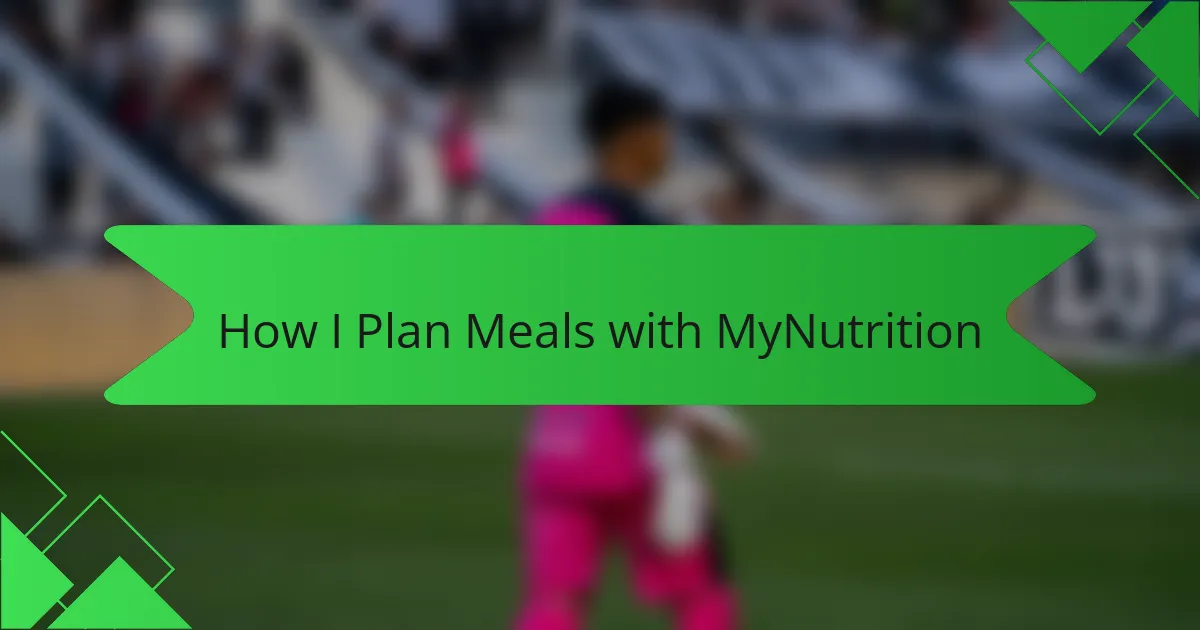Key takeaways
- Nutrition for obstacle course racing should balance carbohydrates for energy, proteins for muscle repair, and fats for sustained energy.
- MyNutrition meal planning helps customize meals to meet individual nutritional needs, enhancing race performance and recovery.
- Setting personal nutrition goals aids in better energy management and overall race preparedness.
- Sample meal plans emphasize nutrient-dense foods to fuel training and recovery effectively.
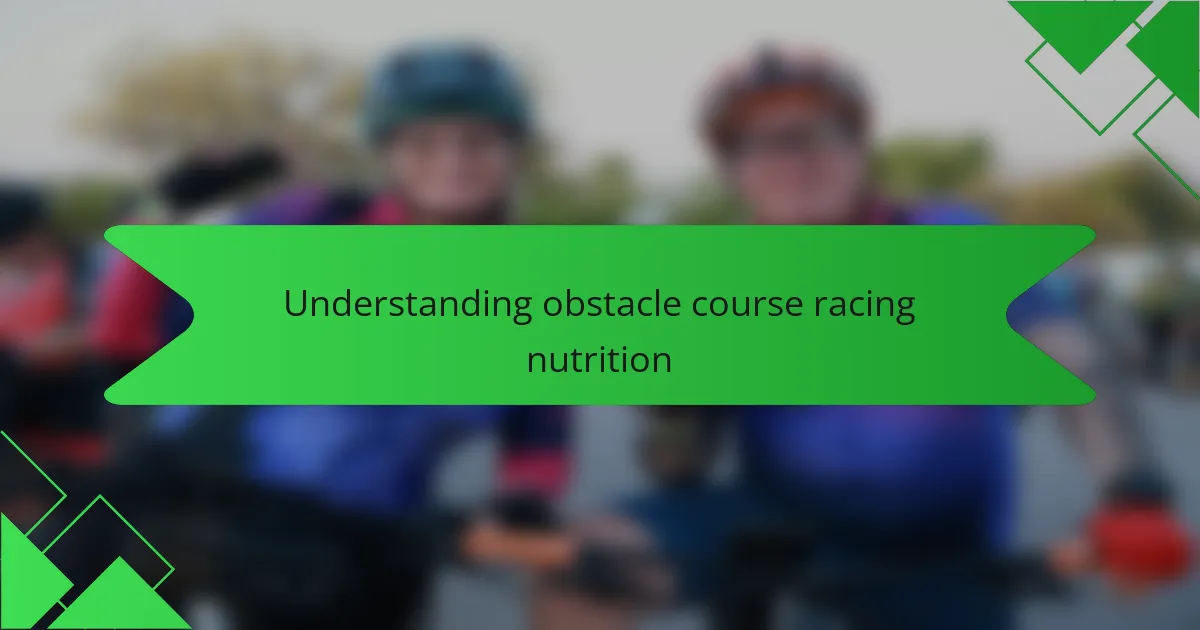
Understanding Obstacle Course Racing Nutrition
Obstacle course racing demands a unique balance of endurance, strength, and agility, which means nutrition has to support all these elements simultaneously. I’ve often found that what I eat directly affects my grip strength on those tricky monkey bars or my stamina during the long runs. Have you ever felt drained halfway through a race and wondered if your nutrition could be the culprit?
Fueling for obstacle course races isn’t just about carbs for energy; it’s also about proteins for muscle repair and fats for sustained energy. From my experience, ignoring any one of these components leaves me feeling either sluggish or unable to recover properly. It’s like trying to build a house with only bricks and no mortar—the foundation won’t hold.
Timing also plays a crucial role. I’ve learned to eat smaller, nutrient-dense meals leading up to the race so I feel energized but not bloated. Do you ever experiment with meal timing and see how it impacts your race-day performance? Understanding this balance has truly transformed my approach to racing and recovery.
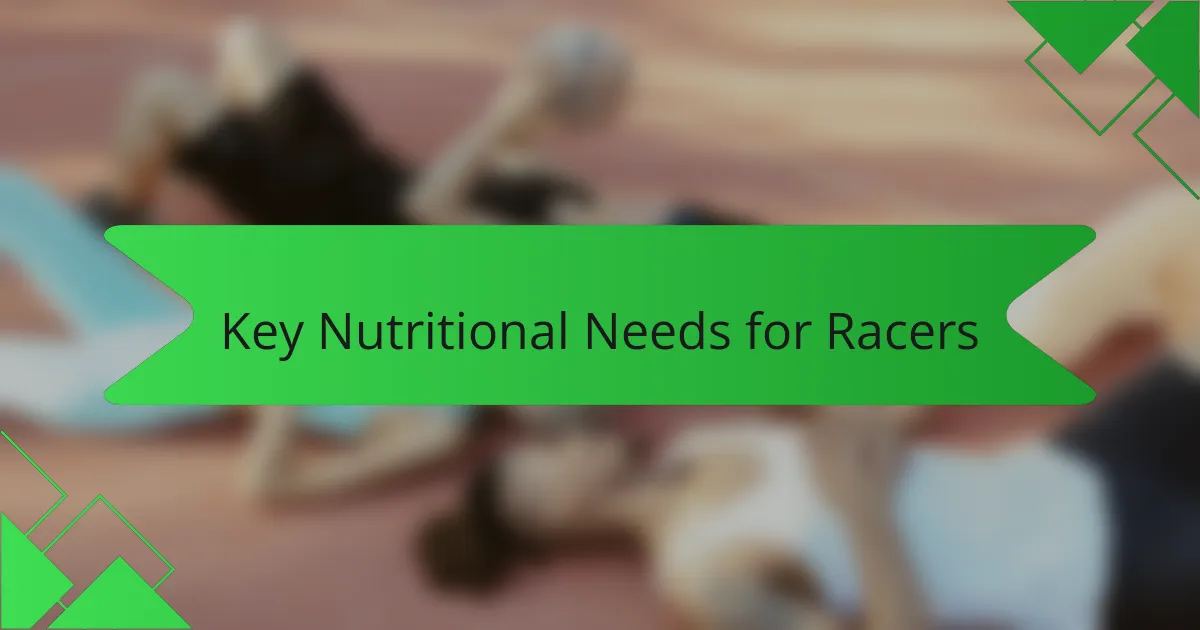
Key Nutritional Needs for Racers
Key Nutritional Needs for Racers
I’ve learned that balancing carbs, proteins, and fats is essential for obstacle course racing. Carbs power your muscles, proteins help with recovery, and fats provide long-lasting energy. Neglecting any one of these can leave you feeling drained or sore after a tough race.
| Nutrient | Importance for Racers |
|---|---|
| Carbohydrates | Primary energy source during high-intensity effort; fuels endurance |
| Proteins | Essential for muscle repair and recovery post-race |
| Fats | Supports sustained energy and helps absorb vitamins |
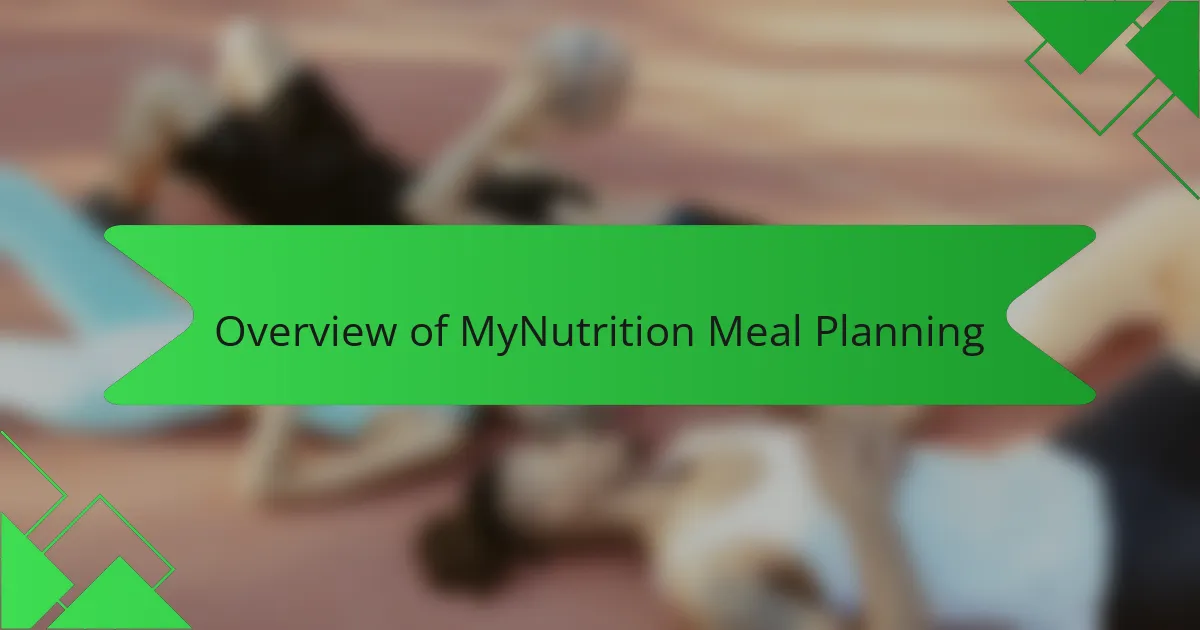
Overview of MyNutrition Meal Planning
MyNutrition meal planning has become my go-to strategy for fueling obstacle course races efficiently. I rely on its personalized approach, which helps me tailor my meals to include the perfect mix of carbs, proteins, and fats that my body craves before and after tough workouts. Have you ever struggled with eating the right things and felt like your performance just wasn’t there? That’s exactly where MyNutrition stepped in for me.
What I appreciate most is how MyNutrition breaks down meal planning into simple, manageable steps without overwhelming me with complicated diets. It’s not about eating less or more—it’s about eating smart. I’ve noticed that when I follow its guidance, I feel stronger on the course and recover faster, which makes all the difference for back-to-back training days.
MyNutrition also takes the guesswork out of timing my meals, which used to be a big challenge for me. Knowing exactly when to eat and what to eat has helped me avoid that sluggish, heavy feeling right before a race. Do you feel confused about when to eat before a big event? Trust me, finding that sweet spot has been a game changer in my race performance.
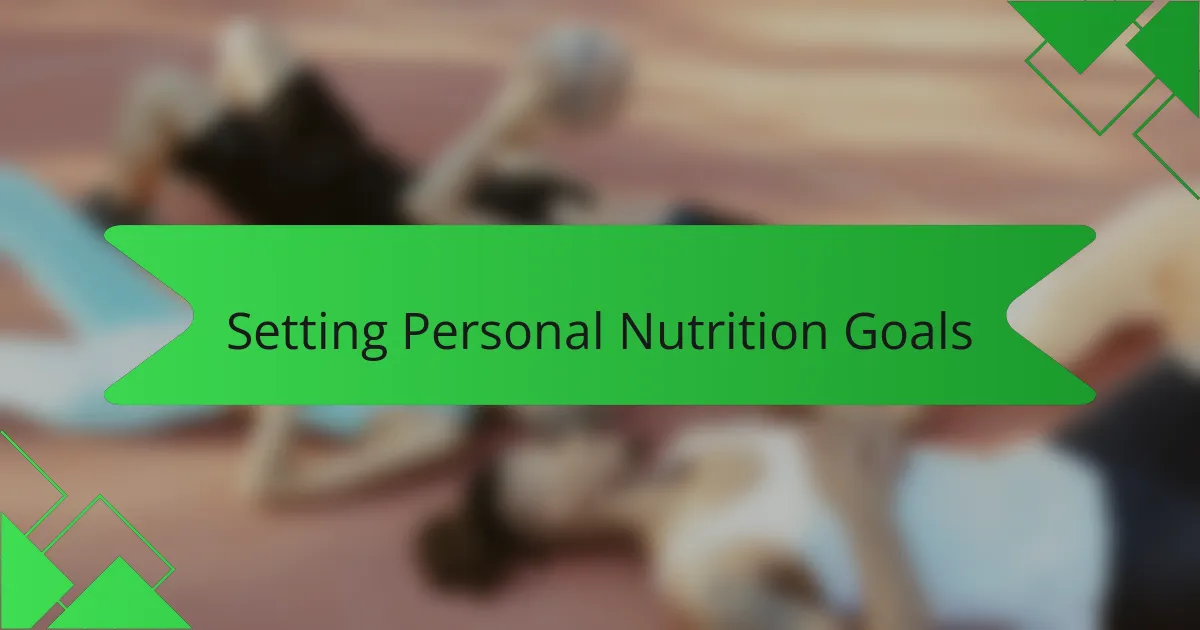
Setting Personal Nutrition Goals
Setting personal nutrition goals has been a game-changer for me in obstacle course racing. I realized that without clear targets, my meals were just random choices, and my energy levels fluctuated wildly during training. By defining what I want to achieve—whether it’s building muscle, boosting endurance, or improving recovery—I’ve been able to tailor my nutrition much more effectively.
Here are the key factors I consider when setting my nutrition goals for racing:
- Match calorie intake to training intensity to avoid energy slumps
- Prioritize protein for muscle repair after tough workouts
- Focus on complex carbs to sustain endurance without crashes
- Include healthy fats to support long-lasting energy
- Hydrate consistently to optimize performance and recovery
- Set realistic, measurable goals that can be adjusted as needed
This approach helped me stay motivated and feel more in control of my progress, which made all the difference on race day.
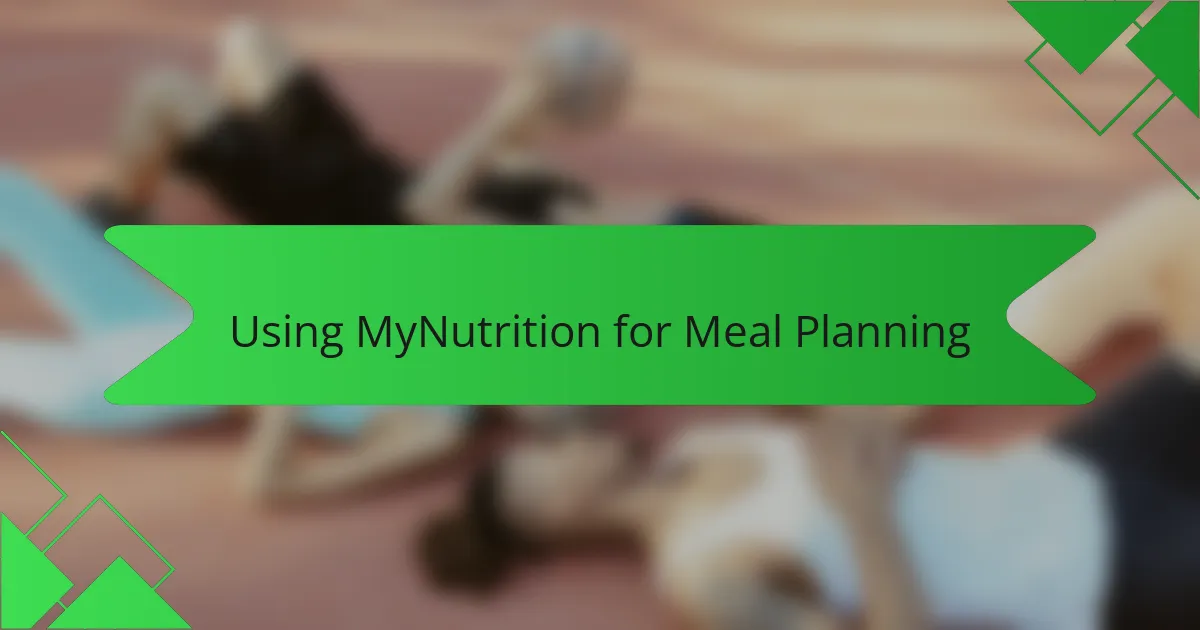
Using MyNutrition for Meal Planning
Using MyNutrition for Meal Planning has become a game-changer in my obstacle course racing routine. I remember struggling with meals that left me either too full or running low on energy halfway through training. Since using the app, I can precisely tailor my macronutrients to fuel my workouts effectively, which has made a noticeable difference in my endurance and recovery.
One feature I find especially helpful is the ability to log and adjust meals in real time, which keeps me accountable and mindful of what I’m consuming. Here’s how I break down my approach with MyNutrition:
- Set daily calorie targets based on training intensity and goals
- Customize macronutrient ratios to prioritize carbs before races and protein for recovery
- Plan meals and snacks ahead to avoid impulsive choices
- Use the app’s database to find foods that fit my nutrition needs and preferences
- Track hydration alongside meals to ensure I’m staying balanced
- Review weekly nutrition summaries to tweak future meal plans for better performance
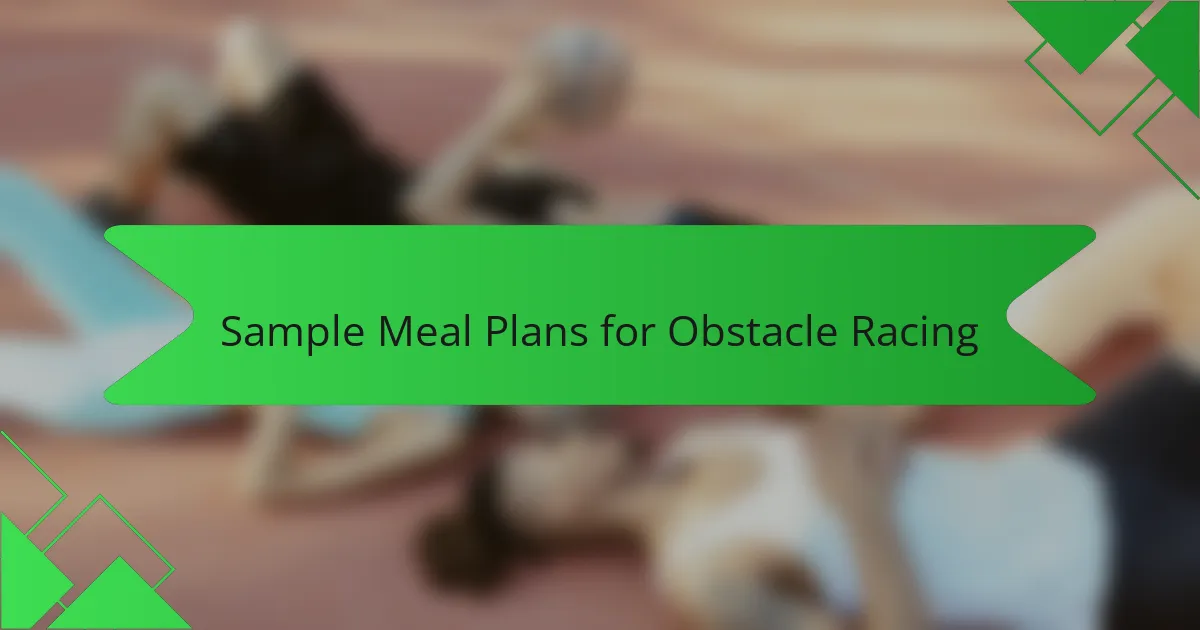
Sample Meal Plans for Obstacle Racing
When I’m gearing up for an obstacle race, I find that having a clear meal plan tailored to my training days makes a big difference in my energy levels and recovery. For me, balancing carbs for fuel with protein for muscle repair is crucial, especially the day before a race when I want to feel strong and ready. I remember one race where skipping proper meal prep left me drained halfway through, so now I never underestimate the power of what I eat leading up to the event.
Here’s a sample meal plan I often use that keeps me energized and focused:
- Breakfast: Oatmeal with banana slices and a spoonful of almond butter for sustained energy
- Mid-morning snack: Greek yogurt with mixed berries to provide protein and antioxidants
- Lunch: Grilled chicken breast, quinoa, and steamed broccoli for a nutrient-packed meal
- Afternoon snack: A handful of nuts and an apple to keep hunger at bay without weighing me down
- Dinner: Baked salmon, sweet potato, and sautéed spinach for muscle recovery and anti-inflammatory benefits
- Pre-race snack (1-2 hours before): A small smoothie with spinach, pineapple, and a scoop of protein powder for easy digestion and lasting energy
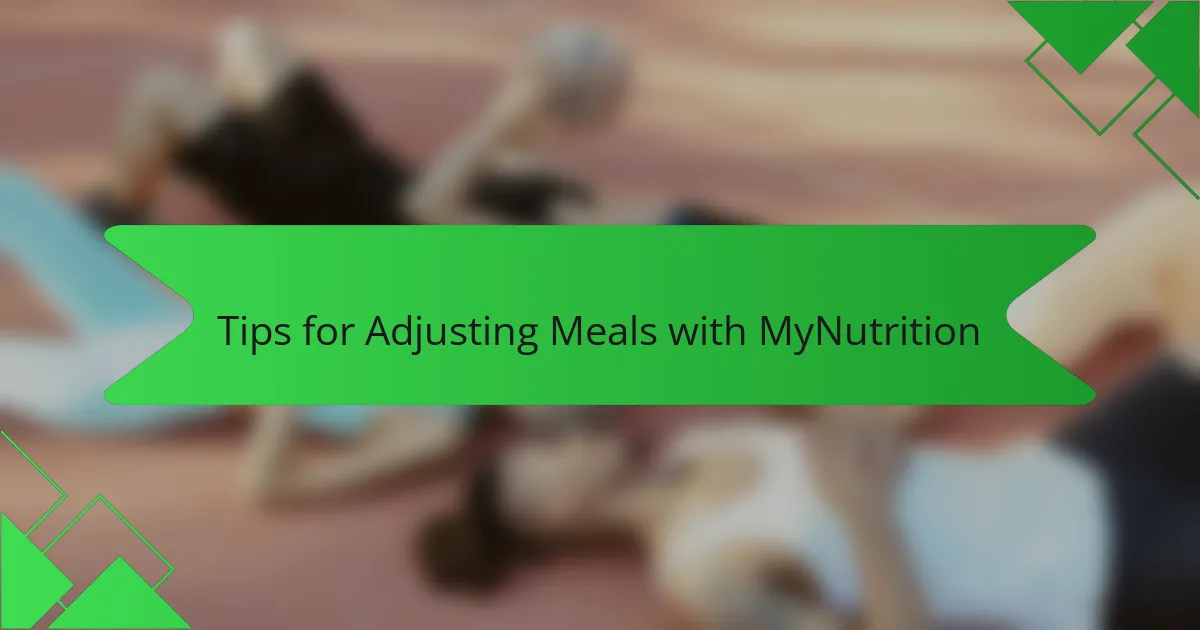
Tips for Adjusting Meals with MyNutrition
Tips for Adjusting Meals with MyNutrition often come down to fine-tuning portions and ingredients based on your training demands. From my experience, when preparing for tougher obstacle race days, I increase my carb intake for energy but dial back on fats slightly to avoid feeling sluggish. It’s a balancing act, but MyNutrition’s flexibility makes these tweaks straightforward, allowing me to feel fueled without overdoing it.
| Adjustment | Effect |
|---|---|
| Increase Carbohydrates | Gives quick energy for endurance and high-intensity efforts |
| Reduce Fats | Prevents sluggishness and aids quicker digestion during intense training days |
| Add More Protein | Supports muscle recovery after obstacle-heavy sessions |
| Adjust Meal Timing | Optimizes energy levels and prevents discomfort during races |
